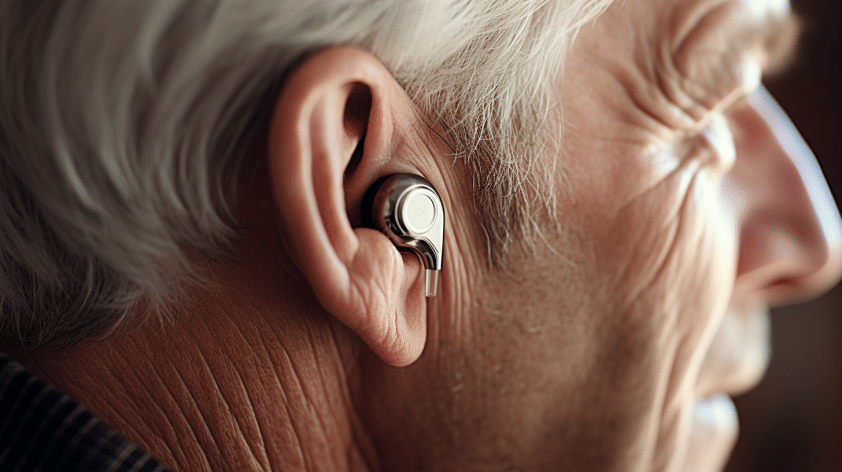Hearing loss affects over 5% of the global population, reducing people’s ability to interpret sounds and communicate effectively.
While hearing aids and cochlear implants can assist with certain types of hearing loss, they have limitations.
Exciting research is underway exploring regenerative medicine – regrowing hair cells, neurons, and other structures in the inner ear – as a way to restore natural hearing.
Key Facts:
- The main structures involved in hearing are hair cells, neurons, synapses, and support cells in the inner ear. Damage to these can cause hearing loss.
- The inner ear has very limited ability to regenerate itself, especially in adults.
- Research is looking at using stem cells and molecular signals to regrow inner ear cells.
- This includes regenerating hair cells, neurons, support cells, and synapses.
- Challenges include getting cells to properly integrate and connect in the complex inner ear environment.
- Combination stem cell and device therapies are being explored to improve outcomes.
How humans hear: coordination between the ears & brain
Hearing relies on a complex series of structures within the ear that turn vibrations into signals for the brain.
When sound waves enter the outer ear, they travel to the eardrum, which vibrates and passes the vibrations to tiny bones in the middle ear.
These bones amplify the vibrations before sending them to the fluid-filled inner ear, or cochlea.
Inside the cochlea are specialized “hair cells” with tiny hairs on them. The vibration of fluid in the cochlea causes the hair cells to bend, triggering nerve impulses.
These impulses travel through neurons (nerve cells) and synapses (connections) to the brain, allowing us to interpret the sounds.
Supporting cells surround the hair cells, offering structural support and maintaining the microenvironment.
All of these intricate structures must work together for us to hear properly.
How Hearing Loss Occurs
Hearing loss happens when there is damage to any part of this complex system.
Hair cells and neurons are especially vulnerable. Loud noise, aging, certain medications, and infections can all cause hair cell loss.
Neurons and synapses can also be damaged by aging, noise, and disease.
Unlike birds and fish, mammals have very limited ability to naturally regenerate lost hair cells and neurons.
When they are damaged, hearing loss results. The severity depends on how many structures are affected.
Supporting cells and the overall structure of the inner ear also start to degrade when hair cells are lost.
This makes the environment even less conducive to regeneration.
Regenerative Medicine Aims to Regrow Lost Structures
Exciting research is focused on finding ways to regrow inner ear hair cells, neurons, synapses, and supporting cells through regenerative medicine.
This involves stimulating stem cells or existing cells to proliferate and differentiate into the needed cell types.
Stem cells are master cells that can divide and turn into specialized cells like hair cells or neurons.
Embryonic stem cells, induced pluripotent stem cells (iPSCs), and adult stem cells from places like the nose are studied.
Molecular signals are also explored to see if they can trigger existing supporting cells in the cochlea to change into hair cells or divide to replace lost cells.
Progress and Challenges With Hair Cell Regeneration

Significant progress has been made toward regenerating hair cells from stem cells, especially with iPSCs.
The focus is on stepwise differentiation – carefully guiding the stem cells through developmental intermediaries before they become mature hair cells.
While researchers can now produce hair cell-like cells in the lab, challenges remain with fully maturing them and successfully integrating them into the complex cochlear environment.
The intricate compartments, fluids, and support structures make it difficult to reconstruct a fully functioning organ of Corti.
Work also continues on finding combinations of molecular signals to trigger proliferation and transdifferentiation (changing into another cell type) of supporting cells into hair cells in the adult cochlea.
This holds promise but needs further research.
Advances in Regenerating Cochlear Neurons
Great strides have also been made recently in producing spiral ganglion neuron cells (neurons of the inner ear) from various stem cell sources.
When transplanted into mouse models, the stem cell-derived neurons will migrate into the cochlea.
However, they do not always fully mature and connect properly with hair cells.
Other research looks at using gene therapy and growth factors like neurotrophin-3 (NT-3) to encourage new neurite sprouting and regeneration of ribbon synapses between hair cells and neurons.
Early results from animal models show improved neuron survival and connectivity when neurotrophins are delivered alongside cell or gene therapy.
Combination Therapies May Offer the Best Outcomes
While regenerating key structures like hair cells and neurons is crucial, researchers suggest a combination approach may work best.
This could involve stem cell delivery plus molecular therapies to support maturation, synapse formation, and integration into the cochlear environment.
For example, stem cell-derived neurons could be transplanted along with gene therapy to boost production of neuron-supporting neurotrophins.
Such combination cellular and molecular therapies aim to regenerate not just structures but functional connections.
Combinations with Devices May Also Help
Another avenue being explored is combining cell regeneration with hearing assistive devices.
For example, regenerating cochlear neurons via stem cell therapy and then using a cochlear implant to stimulate those new neurons.
Or regenerating auditory neurons to interface with an auditory brainstem implant.
While still early stage, such research could lead to regenerative-device combinations that restore more natural hearing than devices alone.
The Future of Hearing Regeneration
Major hurdles remain before regenerative techniques become clinically viable treatments.
However, the explosion of stem cell and molecular research offers hope for those with hearing loss.
Ongoing work to better understand cochlear development, optimize stem cell differentiation, and identify synergistic regeneration strategies brings us closer to the goal of full hearing restoration.
References
- Study: Hearing regeneration and regenerative medicine: present and future approaches
- Authors: German Nacher-Soler et al. (2019)







